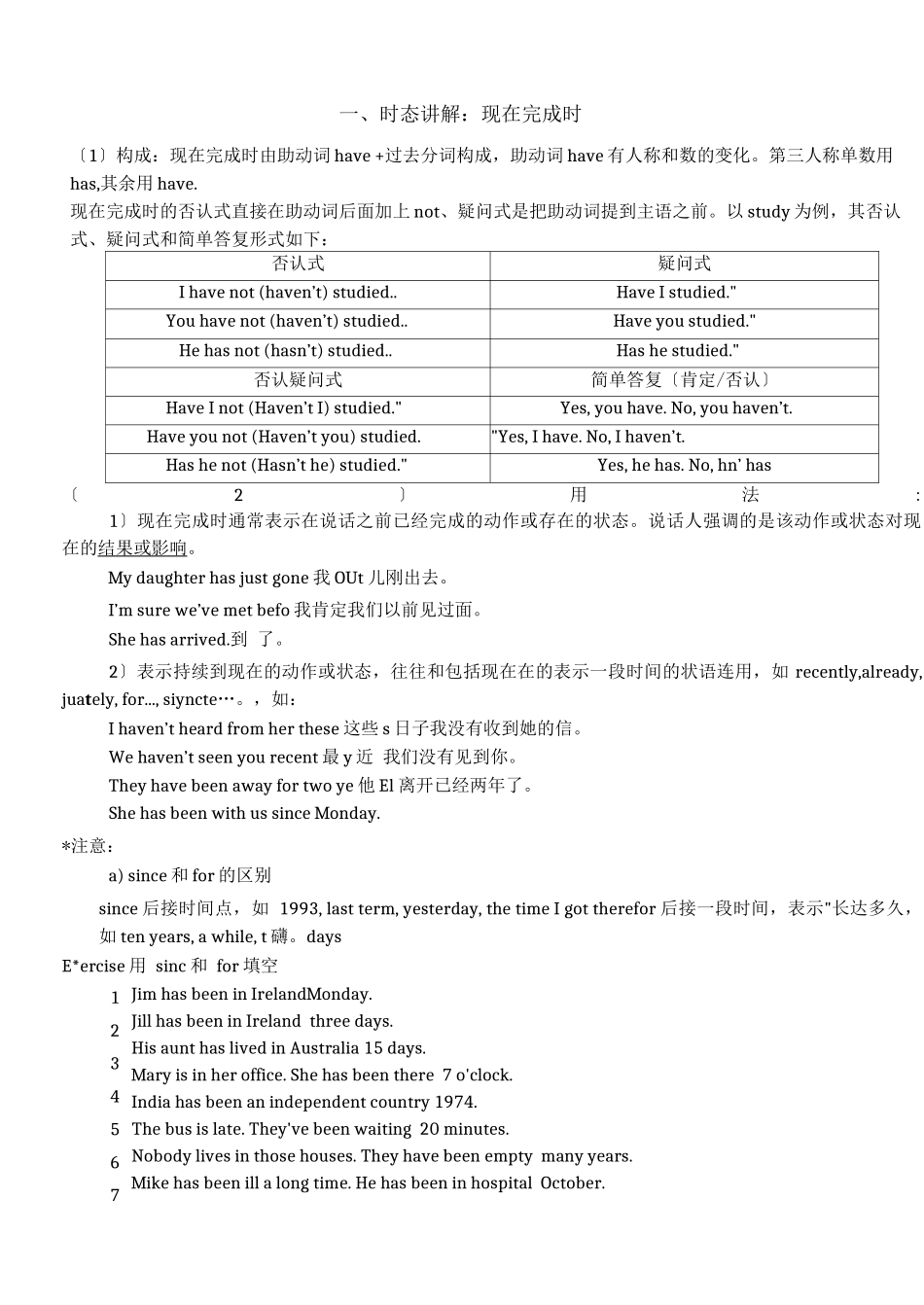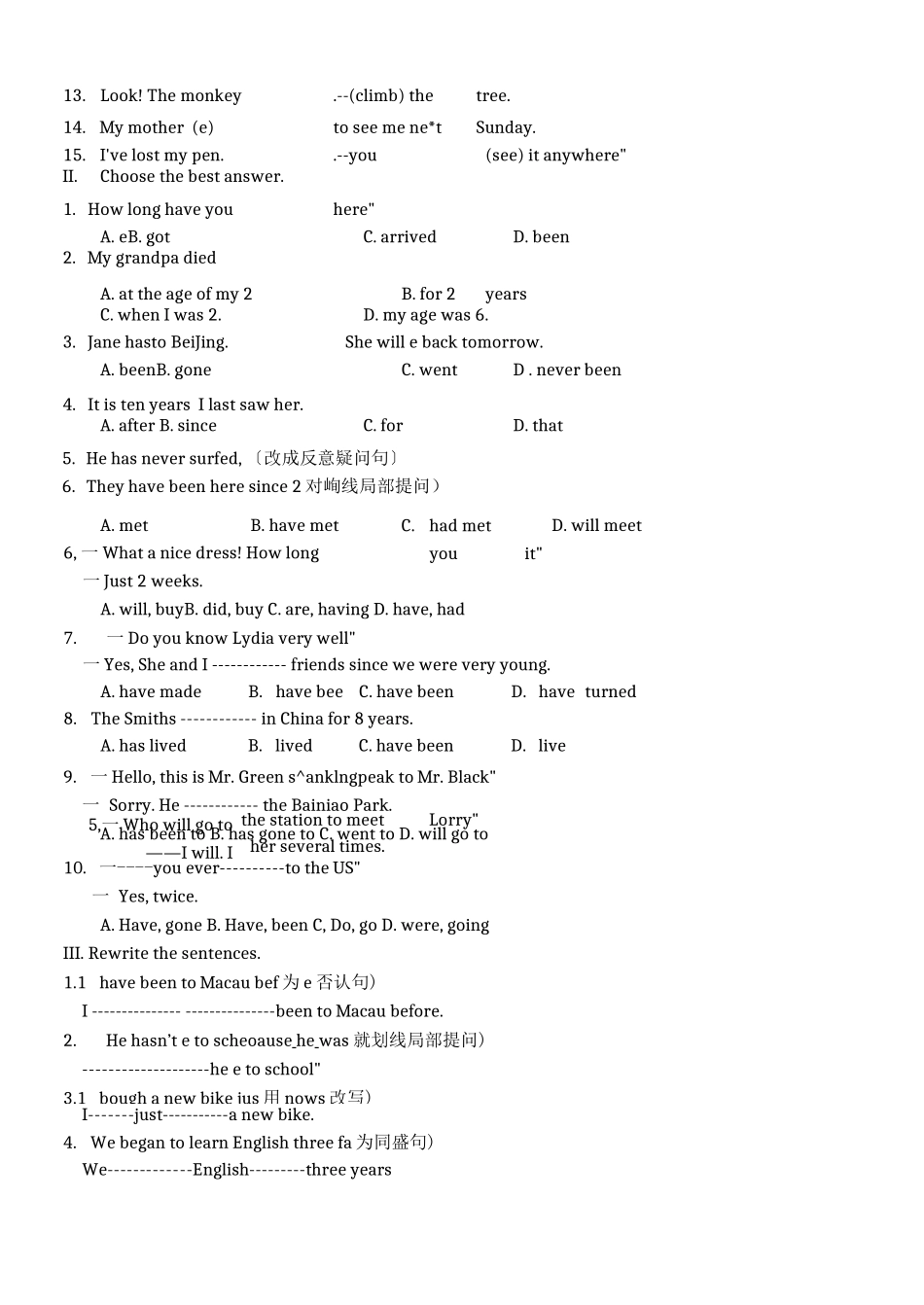一、时态讲解:现在完成时〔1〕构成:现在完成时由助动词 have +过去分词构成,助动词 have 有人称和数的变化。第三人称单数用has,其余用 have.现在完成时的否认式直接在助动词后面加上 not、疑问式是把助动词提到主语之前。以 study 为例,其否认式、疑问式和简单答复形式如下:否认式疑问式I have not (haven’t) studied..Have I studied."You have not (haven’t) studied..Have you studied."He has not (hasn’t) studied..Has he studied."否认疑问式简单答复〔肯定/否认〕Have I not (Haven’t I) studied."Yes, you have. No, you haven’t.Have you not (Haven’t you) studied."Yes, I have. No, I haven’t.Has he not (Hasn’t he) studied."Yes, he has. No, hn’ has〔2〕用法:1〕现在完成时通常表示在说话之前已经完成的动作或存在的状态。说话人强调的是该动作或状态对现在的结果或影响。My daughter has just gone 我 OUt 儿刚出去。I’m sure we’ve met befo 我肯定我们以前见过面。She has arrived.到 了。2〕表示持续到现在的动作或状态,往往和包括现在在的表示一段时间的状语连用,如 recently,already, juately, for..., siyncte…。,如:I haven’t heard from her these 这些 s 日子我没有收到她的信。We haven’t seen you recent 最 y 近 我们没有见到你。They have been away for two ye 他 El 离开已经两年了。She has been with us since Monday.*注意:a) since 和 for 的区别since 后接时间点,如 1993, last term, yesterday, the time I got therefor 后接一段时间,表示"长达多久,如 ten years, a while, t 礴。daysE*ercise 用 sinc 和 for 填空Jim has been in IrelandMonday.Jill has been in Ireland three days.His aunt has lived in Australia 15 days.Mary is in her office. She has been there 7 o'clock.India has been an independent country 1974.The bus is late. They've been waiting 20 minutes.Nobody lives in those houses. They have been empty many years.Mike has been ill a long time. He has been in hospital October.12345672〕表示短暂意义的动词如 arrive, lea...


